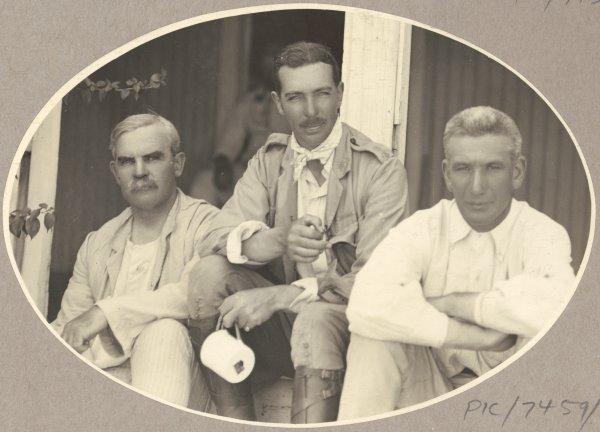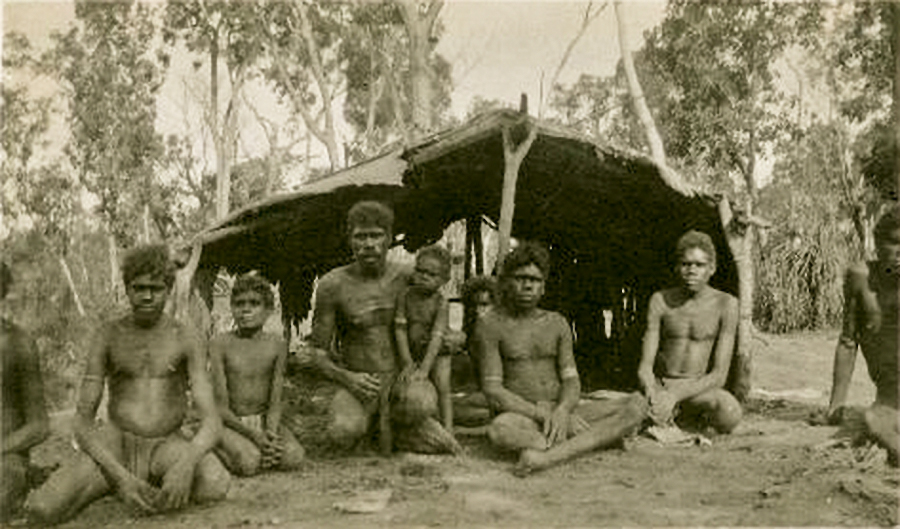|
Red-collared Lorikeet
The red-collared lorikeet (''Trichoglossus rubritorquis'') is a species of parrot found in wooded habitats in northern Australia (north-eastern Western Australia, northern Northern Territory and far north-western Queensland). It was previously considered a subspecies of the rainbow lorikeet, but today most major authorities consider them as separate species.Dickinson, E. C. (editor) (2003). ''The Howard and Moore Complete Checklist of the Birds of the World.'' 3d edition. Christopher Helm. No other member of the rainbow lorikeet group has an orange-red collar over the nape. Every year at the end of the dry season in Darwin, many of them display symptoms of apparent drunkenness. What causes this condition is unclear, though it is thought to be most likely due to a seasonal virus. Intoxication with fermented nectar has been ruled out. Taxonomy Nicholas Aylward Vigors and Thomas Horsfield described the red-collared lorikeet in 1827. The species name is derived from the Lati ... [...More Info...] [...Related Items...] OR: [Wikipedia] [Google] [Baidu] |
Katherine, Northern Territory
Katherine is a town in the Northern Territory of Australia. It is situated on the Katherine River, after which it is named, southeast of Darwin. It is the fourth largest settlement in the Territory and is known as the place where "The outback meets the tropics". Katherine had an urban population of approximately 6,300 at the 2016 Census. Katherine is also the closest major town to RAAF Base Tindal, located southeast, and provides education, health, local government services and employment opportunities for the families of Defence personnel stationed there. In the , the base had a residential population of 857, with only around 20% of the workforce engaged in employment outside of defence, the majority commuting to work in Katherine. Katherine is also the central hub of the great "Savannah Way" which stretches from Cairns in north Queensland to Broome in the Kimberley region of Western Australia. Beginning as an outpost established with the Australian Overland Telegraph ... [...More Info...] [...Related Items...] OR: [Wikipedia] [Google] [Baidu] |
Gulf Of Carpentaria
The Gulf of Carpentaria (, ) is a large, shallow sea enclosed on three sides by northern Australia and bounded on the north by the eastern Arafura Sea (the body of water that lies between Australia and New Guinea). The northern boundary is generally defined as a line from Slade Point, Queensland (the northwestern corner of Cape York Peninsula) in the northeast, to Cape Arnhem on the Gove Peninsula, Northern Territory (the easternmost point of Arnhem Land) in the west. At its mouth, the Gulf is wide, and further south, . The north-south length exceeds . It covers a water area of about . The general depth is between and does not exceed . The tidal range in the Gulf of Carpentaria is between . The Gulf and adjacent Sahul Shelf were dry land at the peak of the last ice age 18,000 years ago when global sea level was around below its present position. At that time a large, shallow lake occupied the centre of what is now the Gulf. The Gulf hosts a submerged coral reef provinc ... [...More Info...] [...Related Items...] OR: [Wikipedia] [Google] [Baidu] |
Birds Of The Northern Territory
Birds are a group of warm-blooded vertebrates constituting the class Aves (), characterised by feathers, toothless beaked jaws, the laying of hard-shelled eggs, a high metabolic rate, a four-chambered heart, and a strong yet lightweight skeleton. Birds live worldwide and range in size from the bee hummingbird to the ostrich. There are about ten thousand living species, more than half of which are passerine, or "perching" birds. Birds have whose development varies according to species; the only known groups without wings are the extinct moa and elephant birds. Wings, which are modified forelimbs, gave birds the ability to fly, although further evolution has led to the loss of flight in some birds, including ratites, penguins, and diverse endemic island species. The digestive and respiratory systems of birds are also uniquely adapted for flight. Some bird species of aquatic environments, particularly seabirds and some waterbirds, have further evolved for swimming. Birds ... [...More Info...] [...Related Items...] OR: [Wikipedia] [Google] [Baidu] |
Trichoglossus
''Trichoglossus'' is a genus of lorikeet in the Psittaculidae or true parrot superfamily. The genus is distributed widely through Australia, Wallacea and Melanesia, with outliers in the Philippines and Micronesia. Members of the genus are characterised by barring, sometimes prominently, on the upper breast. Taxonomy The genus ''Trichoglossus'' was introduced in 1826 by the English naturalist James Francis Stephens. The name combines the Ancient Greek ''thrix'' meaning "hair" and ''glōssa'' meaning "tongue". The type species was subsequently designated as the coconut lorikeet. Following the publication of a molecular phylogenetic study of the lorikeets in 2020, three species were moved from ''Trichoglossus '' to the newly erected genus ''Saudareos''. These were the Mindanao lorikeet, the ornate lorikeet The ornate lorikeet (''Saudareos ornata''), sometimes named the ornate lory, is a species of parrot in the family Psittaculidae. It is endemic to the Sulawesi archipelago ... [...More Info...] [...Related Items...] OR: [Wikipedia] [Google] [Baidu] |
Varied Lorikeet
The varied lorikeet (''Psitteuteles versicolor''), is a species of parrot in the family Psittacidae that is endemic to the northern coastal regions of Australia. It is the only species in the genus ''Psitteuteles''. Taxonomy The first depiction of the species was included in a seminal folio by Edward Lear, the subject of his illustration has since been lost and it became recognised as the holotype. The image was published as the thirty sixth lithographic plate in September 1831, without a location or description, in his work ''Illustrations of the Family of Psittacidae, or Parrots'' (1830–32) depicting live specimens in English zoological exhibitions and private collections. The name supplied in the caption was ''Trichoglossus versicolor'', with the subheading "Variegated Parrakeet". The source of the specimen, according to Richard Schodde (1997), was incorrectly determined as "Cape York", a location proposed by Gregory Mathews in 1912 and subsequently repeated. Schodde repor ... [...More Info...] [...Related Items...] OR: [Wikipedia] [Google] [Baidu] |
Eucalyptus Miniata
''Eucalyptus miniata'', commonly known as the Darwin woollybutt or woolewoorrng, is a species of medium-sized to tall tree that is endemic to northern Australia. It has rough, fibrous, brownish bark on the trunk, smooth greyish bark above. Adult leaves are lance-shaped, the flower buds are ribbed and arranged in groups of seven, the flowers orange or scarlet and the fruit is cylindrical to barrel-shaped or urn-shaped, with ribs along the sides. Description ''Eucalyptus miniata'' is a tree that typically grows to a height of , sometimes as tall as , usually with a single trunk, and forms a lignotuber. The bark is soft, rough, fibrous and fissured, grey to red-yellow-brown in colour on the trunk with white to pale grey smooth bark on the upper trunk and branches. Young plants and coppice regrowth have greenish-brown leaves that are elliptical in shape, long and wide. Adult leaves are dull to slightly glossy green, paler on the lower surface, lance-shaped to curved, long and wi ... [...More Info...] [...Related Items...] OR: [Wikipedia] [Google] [Baidu] |
Darwin Woollybutt
''Eucalyptus miniata'', commonly known as the Darwin woollybutt or woolewoorrng, is a species of medium-sized to tall tree that is endemic to northern Australia. It has rough, fibrous, brownish bark on the trunk, smooth greyish bark above. Adult leaves are lance-shaped, the flower buds are ribbed and arranged in groups of seven, the flowers orange or scarlet and the fruit is cylindrical to barrel-shaped or urn-shaped, with ribs along the sides. Description ''Eucalyptus miniata'' is a tree that typically grows to a height of , sometimes as tall as , usually with a single trunk, and forms a lignotuber. The bark is soft, rough, fibrous and fissured, grey to red-yellow-brown in colour on the trunk with white to pale grey smooth bark on the upper trunk and branches. Young plants and coppice regrowth have greenish-brown leaves that are elliptical in shape, long and wide. Adult leaves are dull to slightly glossy green, paler on the lower surface, lance-shaped to curved, long and wi ... [...More Info...] [...Related Items...] OR: [Wikipedia] [Google] [Baidu] |
Groote Eylandt
Groote Eylandt ( Anindilyakwa: ''Ayangkidarrba'' meaning "island" ) is the largest island in the Gulf of Carpentaria and the fourth largest island in Australia. It was named by the explorer Abel Tasman in 1644 and is Dutch for "Large Island" in archaic spelling. The modern Dutch spelling is ''Groot Eiland''. The original inhabitants of Groote Eylandt are the Anindilyakwa, an Aboriginal Australian people, who speak the Anindilyakwa language (also known as Amamalya Ayakwa). They consist of 14 clan groups which make up the two moieties on the island. The clans maintain their traditions and have strong ties with the people in the community of Numbulwar and on Bickerton Island. The island's population was 2,811 in the 2016 census. There are four communities on Groote Eylandt. The mining company GEMCO established the township of Alyangula for its workers. The three main Aboriginal communities are Angurugu and Umbakumba, and Milyakburra on Bickerton Island. There are also a number ... [...More Info...] [...Related Items...] OR: [Wikipedia] [Google] [Baidu] |
Banksia
''Banksia'' is a genus of around 170 species in the plant family Proteaceae. These Australian wildflowers and popular garden plants are easily recognised by their characteristic flower spikes, and fruiting "cones" and heads. ''Banksias'' range in size from prostrate woody shrubs to trees up to 30 metres (100 ft) tall. They are found in a wide variety of landscapes: sclerophyll forest, (occasionally) rainforest, shrubland, and some more arid landscapes, though not in Australia's deserts. Heavy producers of nectar, ''banksias'' are a vital part of the food chain in the Australian bush. They are an important food source for nectarivorous animals, including birds, bats, rats, possums, stingless bees and a host of invertebrates. Further, they are of economic importance to Australia's nursery and cut flower industries. However, these plants are threatened by a number of processes including land clearing, frequent burning and disease, and a number of species are rare and endangered. ... [...More Info...] [...Related Items...] OR: [Wikipedia] [Google] [Baidu] |
King Sound
King Sound is a large gulf in northern Western Australia. It expands from the mouth of the Fitzroy River, one of Australia's largest watercourses, and opens to the Indian Ocean. It is about long, and averages about in width. The port town of Derby lies near the mouth of the Fitzroy River on the eastern shore of King Sound. King Sound has the highest tides in Australia, and amongst the highest in the world, reaching a maximum tidal range of at Derby.Derby tides at derbytourism.com.au . Retrieved 7 January 2007 The tidal range and water dynamic were researched in 1997–1998. Waters within the sound are generally turbid. The turbidity is associated with the erosion of |
International Ornithologists' Union
The International Ornithologists' Union, formerly known as the International Ornithological Committee, is a group of about 200 international ornithologists, and is responsible for the International Ornithological Congress and other international ornithological activities, undertaken by its standing committees. International Ornithological Congress The International Ornithological Congress series forms the oldest and largest international series of meetings of ornithologists. It is organised by the International Ornithologists' Union. The first meeting was in 1884; subsequent meetings were irregular until 1926 since when meetings have been held every four years, except for two missed meetings during and in the immediate aftermath of the Second World War. Meetings See also * '' Birds of the World: Recommended English Names'', a book written by Frank Gill Frank Gill may refer to: * Frank Gill (Australian footballer) (1908–1970), Australian rules footballer with Carlton * Fran ... [...More Info...] [...Related Items...] OR: [Wikipedia] [Google] [Baidu] |



.jpg)





